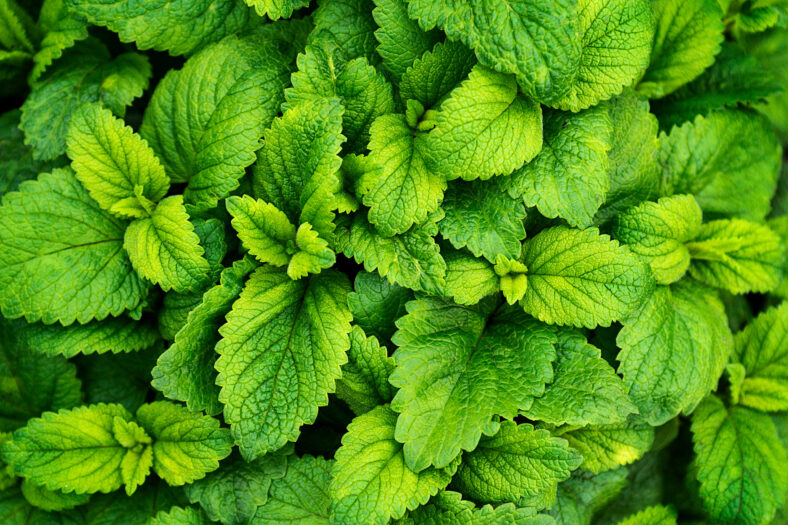Your Guide To Growing Mint In Your House

Whether you’re looking to garnish your cocktails, upgrade your tea game, or feel like you kind of have your life together, growing mint indoors will fulfill your goals.
You don’t need a green thumb or a sunny backyard to grow this low-maintenance herb. All you need is a pot, a windowsill, and some TLC.
Mint plants produce small white or purple flowers during the summer that attract bees, butterflies, and other pollinators.
They spread aggressively, taking root wherever they touch the soil. Mint is toxic to animals and serves as a pest repellant. Keep reading to learn more about mint plant care.
How To Care For Mint Indoors
When growing mint indoors, choose a 12-inch wide container to give the plant enough space. Use soil with low fertilizer meant for edible plants.
It should get four to six hours of sunlight each day, and the temperature in its environment should stay between 65 degrees and 75 degrees Fahrenheit.
Indoor mint plants may struggle in areas with low humidity. Keep the soil moist and increase humidity by misting between waterings.
Do not give mint plants too much shade, or else the leaves won’t be as flavorful. Mint will grow in full sun as long as it’s watered frequently and has some protection from afternoon rays.

Sign up for Chip Chick’s newsletter and get stories like this delivered to your inbox.
Mint plants like water, but too much can collect in the soil and rot their roots. They should be watered in the morning to maintain moisture as temperatures rise. If the foliage is wilting, that is a sign the plant needs water.
During the growing season, feed mint plants with fertilizer every four to six weeks if the soil lacks nutrients. Start in spring when the plants sprout. Make sure not to give too much feed, as this can actually cause the plants to lose their flavor.
What To Know About Harvesting Mint
Once the plant has multiple stems that are six to eight inches long, you can harvest it regularly. Just snip off the stems to encourage new growth.
Do not harvest more than a third of the plant at a time. Removing large amounts can weaken it. Mint will continue growing in winter, so you can enjoy it all year round.
You can use freshly harvested mint as a garnish for mixed drinks, salads, soups, tea, and more. Mint can be stored in the refrigerator for three to five days, but its peak flavor is present on the first day of harvesting.
There are many types of mint with a range of appearances and flavors. Some popular varieties include peppermint, chocolate mint, spearmint, apple mint, pineapple mint, orange mint, and wild mint.
Mint is usually not affected by pests or diseases, although sometimes it can contract rust, which shows up as small orange spots on the undersides of leaves. Use a fungicide to get rid of it and allow plants to dry between waterings.
More About:Gardening